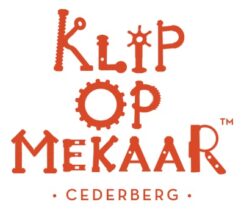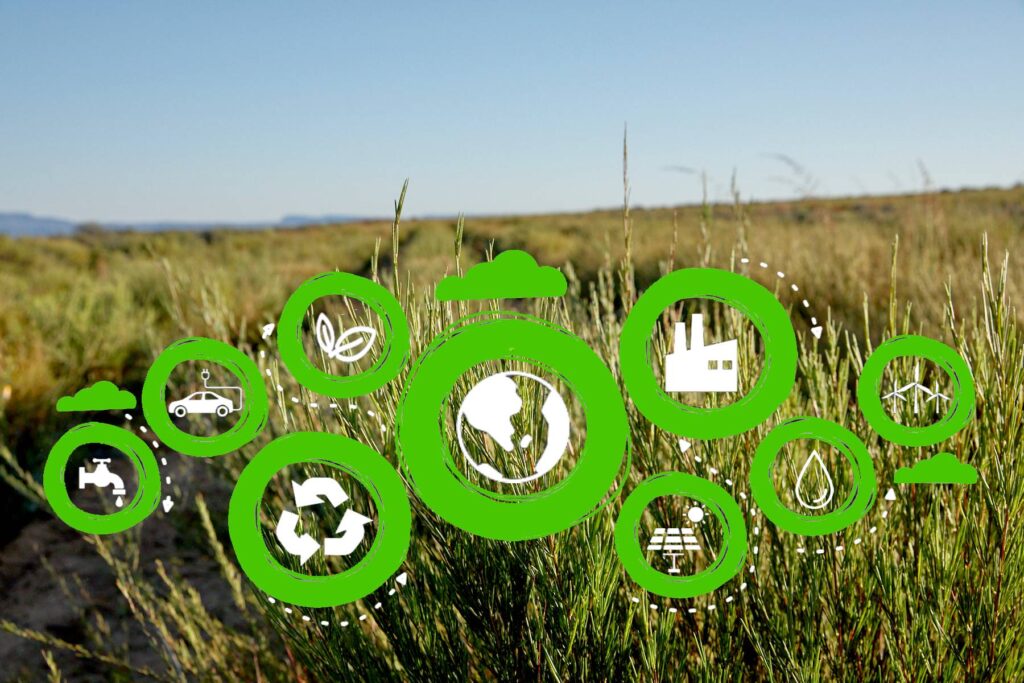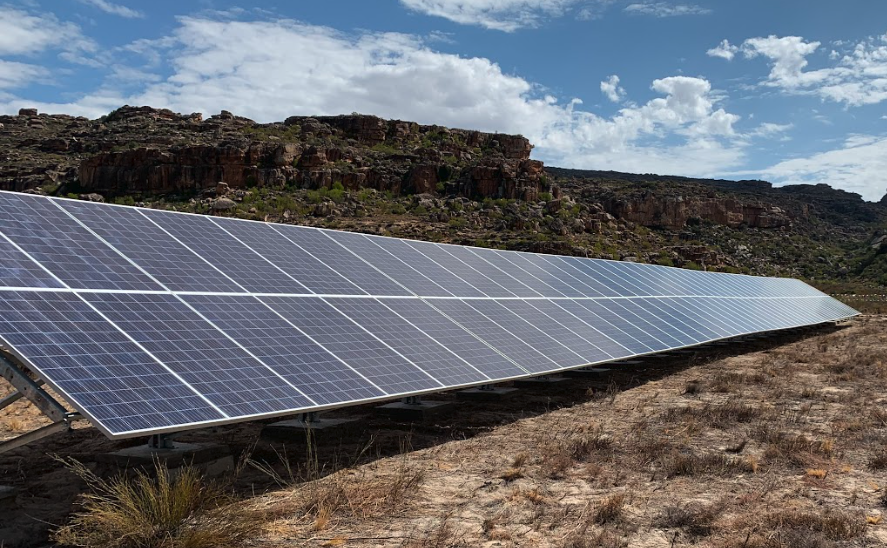In recent years, the global beverage market has been pivoting towards a focus on sustainability. As it has done so, the many tea brands that operate in the sector have engaged in understanding where their product comes from, what its carbon footprint is, and whether production has a positive or negative impact on the environment. Included in this broad review of ingredient sourcing across the tea industry is carbon net-zero rooibos.
Driving this shift is climate change and a strong desire from consumers for transparency from the brands they support: in terms of corporate social responsibility (ESG), and also as far as the environmental impact of the wide variety of ingredients and packaging that are used in the creation of herbal teas, tisanes and ready-to-drink products. A key focus and growing point of interest in this area is the sourcing of carbon net zero (aka carbon neutral) ingredients.
By choosing to source their ingredients from certified sustainable, regenerative and planet-positive producers, beverage brands have a golden opportunity to do well by doing good, whilst selling a product that is inherently also healthy and functionally beneficial to the end user.
On the one hand, large tea brands owned by public or well-known private companies are already required to cut their greenhouse gas (GHG) emissions in accordance with their government and regional environmental regulatory requirements; and are aligning with science-based targets initiatives to do so.
On the other hand, there is an opportunity for smaller, nimble, and entrepreneurial tea brands to source products that are already carbon neutral or carbon net –zero, in order to improve their market position amongst environmentally conscious consumers.

Why Should Tea Brands and Suppliers Move to Carbon Net Zero Production?
With general acceptance that climate change is a growing challenge, interest in the mitigation of a warming climate is on the increase, as it makes good business sense to make a positive impact, from crop to cup. Key to this shift is the understanding of greenhouse gas emissions, and how these are increasingly affecting climate on a global scale.
Taken as a whole, including the production of teas and herbal tisanes, food production accounts for 26% of greenhouse gas emissions globally.

Consequently, there is a broad drive from producers within the food sector to reduce greenhouse gas emissions as swiftly as possible. For tea and brands and their suppliers – including the many links in the supply chain – this means taking stock of business as usual, and understanding ways in which decarbonisation can be achieved whilst ensuring that supply chains are maintained.
From a business perspective, climate change is a risk on the most fundamental level, with an increasingly unpredictable climate becoming a direct threat to the steady supply of product. In this area, it is often producer countries in the global south that are frequently affected by extremes of weather. Added to this risk is the commercial concern that consumers are increasingly seeking out ethical and sustainable products. When these are weighed up, the choice is clear: securing climate-sustainable production sources is good business.
How Do Rooibos Producers Reduce Emissions or Offset Emissions to Become Carbon Neutral Rooibos Suppliers?
In the pursuit of decarbonisation and reduction of GHG emissions, agricultural producers and suppliers, including those in the rooibos sector, would look to the sources of emissions within all areas of their operations. The first and most obvious way, and this is one that many producers are already engaged in, would be to evaluate their inputs.
To do so would involve a cradle to gate life-cycle assessment, in order to account for all direct emissions related to production such as crop production, fuel, and waste. As part of this assessment, this would also include indirect emissions such as electricity, fertiliser, packaging, transport and shipping. By getting a clear understanding of these elements, the related GHG emissions can be identified and alternatives or reductions considered and implemented.
For many, this approach will consist of a mixed strategy that looks at ways to reduce emissions by decreasing energy inputs and moving these to clean or renewable energy. Solar, wind and hydro-electrical options stand out as practical means of making this transition, as farms tend to have both the space and often the appropriate landscapes which lend themselves to harnessing both solar or wind power, or both where possible. Coupled to this would be assessments of ways to improve energy efficiency in order to reduce the volume of energy required to farm and process their raw material.
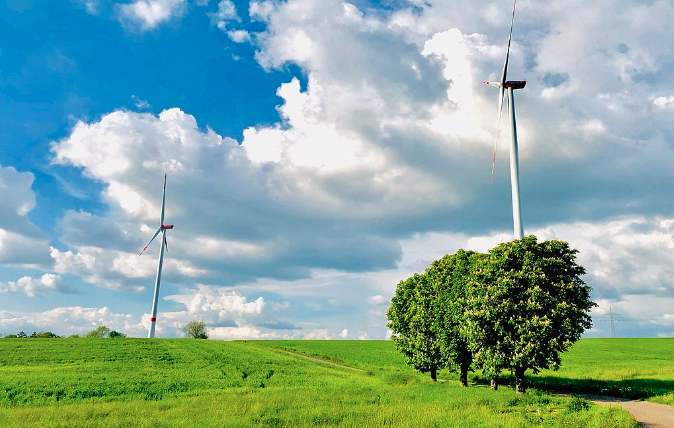
A shift toward the use of renewable-powered vehicles where possible would enable producers to rapidly reduce their carbon emissions if addressed. From trucks to tractors and on to forklifts or other machinery used in the sowing, fertilising, watering, and harvesting phases of a crop – and on to primary processing – options now exist for producers to both reduce their energy requirement, whilst making use of renewable sources of energy.
And, though the initial investment in solar and wind (or other renewable sources where applicable) may be significant, the long term cost savings present a favourable prospect for producers who think in terms of farming in multi-year cycles and are always looking for ways to reduce their overheads. This would include sourcing local farm inputs to reduce inbound emissions costs associated with farming, processing and final packaging.
Though there are almost no existing studies done on the emissions generated by rooibos tea production (apart from Klipopmekaar Rooibos in April 2024) as an illustration of carbon emissions by the tea producer sector, a range of carbon footprint analyses have been carried out on black tea producers, globally.
Greenhouse Gas Emissions in The Global Black Tea Sector
- 10.8 kg CO2e/kg tea in China in 2017, examining the 16 major producing regions (Liang et al. 2021); 6.97 and 7.94 kg CO2e/kg tea for cultivation and processing of green tea, respectively, from smallholder farmers in Liugou Village, Hanzhong City, Shaanxi Province, China (He et al. 2023);
- Dongshan tea from Yilan County, Taiwan, had a carbon footprint of 3.81 kg CO2e/kg tea from raw material use, manufacture and distribution (Hu et al. (2019)
- The carbon footprint of black tea from estates and factories around Kericho and Limuru, Kenya, between 2012 and 2015 were between 0.98 and 1.26 kg CO2e/kg tea (cradle to factory gate) (Rigarlsford et al. 2020)
- Greenhouse gas (GHG) emissions from four tea growing regions in Sri Lanka ranged between 0.51 and 0.60 kg CO2e/kg tea (Vidanagama & Lokupitiya 2018)

How Do Producers Trap Carbon in Their Soils?
Being an energy-intensive activity, agriculture worldwide is ranked amongst the greatest generators of greenhouse gas emissions. The reason for this is that a combination of mainstream (conventional) farming methods and bad agricultural practices add up to the consumption of large amounts of fossil fuels whilst releasing carbon from the soil, instead of trapping it in a sustainable manner.
When this approach is applied on the global scale of commercial farming, it becomes clear that business as usual is not good for our climate, or for the health of the planet’s soils and ecosystems within which farming takes place.
With high energy inputs, large volumes of fertiliser and pesticides/herbicides required in order to sustain yields from year to year, the orthodox approach to farming is not conducive to lowering emissions, or trapping carbon. In essence, considering the approach of working in harmony with nature that is taken by organic and regenerative producers, conventional farming would be considered bad agricultural practice.
Conversely, an approach that reduces energy inputs and shifts towards the use of renewables whilst also applying methods of building organic matter and carbon in the soil – and generally applying sustainable farming principles – would be considered good agricultural practice.
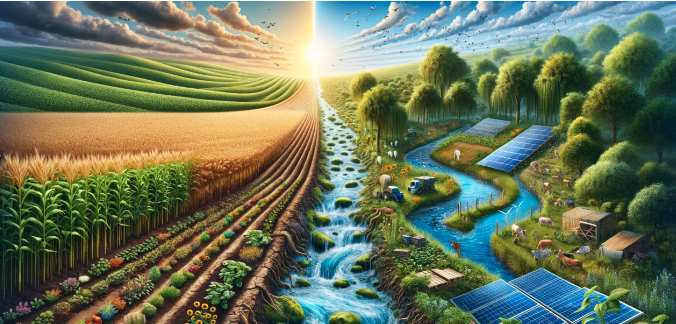
In order to trap carbon, a regenerative approach needs to be followed – and in doing so, the key practice would be to enable plants such as cover crops, and the residual plant matter left over from any harvesting of crops, to be mulched and returned to the soil (without tilling).
This approach employs the same life-cycle as that which occurs in nature, whereby carbon in the soil is built up over many years, with plants accumulating carbon through the sequestration of CO2. When these plants die, the carbon trapped in their leaves, stalks, roots and other parts returns to the soil in the form of humus or mulch, which breaks down and becomes part of a healthy living soil. Aiding in this process are organisms such as earthworms, and many micro-organisms, bacteria and fungi, all of which play an important role in creating a thriving microbial community in soil.
Over a period of many years, the regenerative approach sees the buildup of increasing amounts of carbon in the soil, which then can effectively inset against (or offset) GHG emissions of the farming operation. Sometimes, in situations where very large amounts of carbon are trapped in the soil in a scientifically assessed and validated manner, then such producers may be eligible to join or create carbon credit schemes. In such agri-carbon credit schemes, the producers are able to then sell their credits on the global carbon credit market.
In practice, the combination of a reduction of emissions with the creation and sustenance of healthy living soils is how producers balance their carbon, and can progress toward achieving carbon net-zero status, and have their operations assessed and verified as such.
Toward Carbon Net Zero: The Importance of Measurement
In the event a producer is trying to get assessed as carbon net negative or carbon net zero (or carbon neutral), they would need to get their carbon footprint measured on a scientific basis and according to the relevant ISO and GHG Protocol’s Product Life Cycle Accounting Standards. This is done by using the services of accredited independent third-party consultants, auditors, and verification companies and laboratories. Interpreting the results of measurement enables evaluation of a producer’s current position, and the planning of future strategies for reducing emissions and improving sequestration.
When it comes to measuring soil carbon, farmers must test soil samples at consistent GPS points over a long period of time to capture large statistically relevant bodies of data that can verifiably provide a comprehensive picture of their farm soils.
By taking soil samples over a long period of time and at many representative and statistically informative parts of their operations fields, a large volume of quality data is developed that provides a comprehensive picture – and this can be used as evidence to prove the effectiveness of increased soil carbon programme. Without measuring soil carbon, one cannot prove any carbon insetting in a farming environment.

Debunking Carbon Buzzwords
From the point of view of a tea beverage consumer it’s probably fair to say that carbon net zero rooibos and carbon neutral rooibos are broadly the same things. However, within B2B trading of this commodity between producers/suppliers and tea brands, it’s important to understand the subtle differences in terminology.
To provide guidance in this area, we unpack the terminology below:
What is a Carbon Net-Negative Rooibos Producer?
A farm/business being assessed as carbon negative means, in effect, that less than zero carbon dioxide and carbon dioxide equivalent (CO2e) greenhouse gasses are emitted by the rooibos producing/supplying operation. The operation is effectively “Climate Positive (which is also a confusing term in this context). However, since it is impossible to emit a negative amount of carbon (or any other physical substance), being carbon-negative refers to the net emissions created. Also, consequently, a rooibos product cannot be carbon net negative … only the business/farm/operation supplying the product can be carbon net negative.
What is Carbon Net-Zero Rooibos?
To be assessed as carbon net-zero rooibos, the carbon emissions created by a rooibos producer/supplier’s carbon would need to be balanced (or net- negative) by taking the same amount out of the atmosphere and sequestering, or trapping, it. So a carbon net-negative business would supply carbon net-zero rooibos to its client.
What is Carbon Neutral Rooibos?
Carbon neutral rooibos refers to rooibos tea products that have been produced in a way that offsets the carbon emissions generated throughout the entire production/supply process, making the overall carbon footprint of the product effectively zero. This may involve purchasing carbon-credits to offset against GHG, or investing in their own completely different projects/efforts that are carbon net-negative and can be offset.
What are Carbon Credits?
Carbon credits (or Agri-Carbon credits in agricultural space), work like permission slips for emissions. When a company buys a carbon credit, they gain permission to generate one ton of CO2 emissions. With carbon credits, carbon revenue flows vertically from companies to regulators, though companies who end up with excess credits can sell them to other companies.
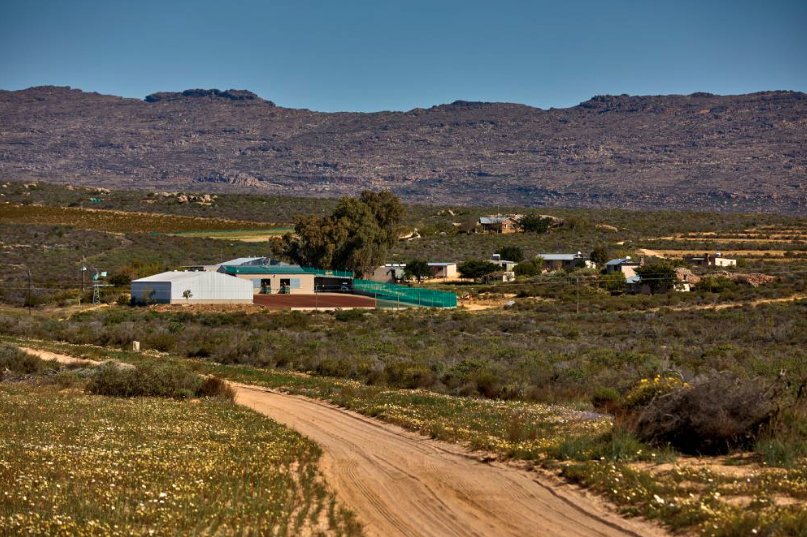
Klipopmekaar: The First Carbon Net Zero Rooibos Producer
For producers in the rooibos region, the impact of climate change has resulted in an increasingly dryer and hotter climate, which has had implications for the health of the soil, and in turn, for production generally. Under these circumstances, our journey to initially becoming certified as an organic producer, and now assessed as a carbon net-negative rooibos producer, has helped us understand and develop our regenerative approach.
Our journey to carbon net-negative rooibos production began when Klipopmekaar was established in 2007 and certified as an organic rooibos producer in the same year. As a premium rooibos producer, our approach has always been to understand ways in which we can apply restorative and regenerative practices in the farming of our rooibos crop in the northern Cederberg.
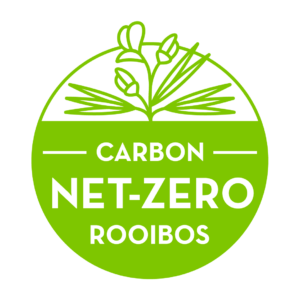
In April 2024, Klipopmekaar became the first carbon net-negative rooibos producer/supplier within the entire rooibos industry (to the best of our knowledge).
We’re very proud of this achievement, as it means that our organic, no-till, and regenerative agriculture endeavours over the past decade have successfully trapped thousands of tons of soil carbon annually, whilst our GHG (greenhouse gas) emissions (cradle to gate and gate to gate/client) are in the low hundreds of tons.
For our valued clients, our third party verified assessment means that when you buy rooibos from us, it arrives as carbon net-zero at your local warehouse or destination port. This is an important environmental and GHG emissions reduction benefit that can be communicated within your organisation and to your consumers.
For more detail on how our carbon net-zero rooibos can benefit you as a tea brand, see our Carbon Net-Zero Rooibos Supplier page.
For more information on our approach to producing premium rooibos through regenerative farming that builds climate resilience, see these pages here on our website:
